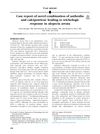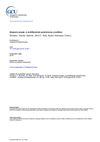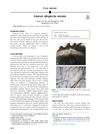TLDR Topical minoxidil showed limited effectiveness for hair regrowth in alopecia areata.
A double-blind trial conducted on 50 adult patients with longstanding alopecia areata assessed the effectiveness and safety of topical minoxidil. The study included patients with varying severities of the condition, and treatments were administered over several months. Results showed that both minoxidil and placebo groups experienced similar rates of hair regrowth, but substantial regrowth was observed in only 7 patients, with cosmetically acceptable results in just 2. No participants were able to discontinue wearing wigs, and the greasy nature of the treatment was a common complaint. Patients with alopecia universalis showed the least favorable response to the treatment.
 6 citations
,
March 2019 in “JAAD case reports”
6 citations
,
March 2019 in “JAAD case reports” A new mix of anthralin and calcipotriene might help treat severe hair loss.
 148 citations
,
December 2018 in “Journal of autoimmunity”
148 citations
,
December 2018 in “Journal of autoimmunity” Alopecia areata is an autoimmune disease causing patchy hair loss, often with other autoimmune disorders, but its exact causes are unknown.
 4 citations
,
November 2018 in “JAAD case reports”
4 citations
,
November 2018 in “JAAD case reports” Alopecia areata can sometimes appear as a straight line of hair loss instead of round patches.
May 2018 in “Journal of cosmetology & trichology” Combining platelet-rich plasma therapy with prostaglandin-F eye drops can significantly regrow hair in alopecia universalis.
1 citations
,
March 2017 in “PubMed” Topical minoxidil did not significantly regrow hair in alopecia areata patients after 3 months.
110 citations
,
December 2013 in “The journal of investigative dermatology. Symposium proceedings/The Journal of investigative dermatology symposium proceedings” Alopecia areata is a genetic and immune-related hair loss condition that is often associated with other autoimmune diseases and does not typically cause permanent damage to hair follicles.


